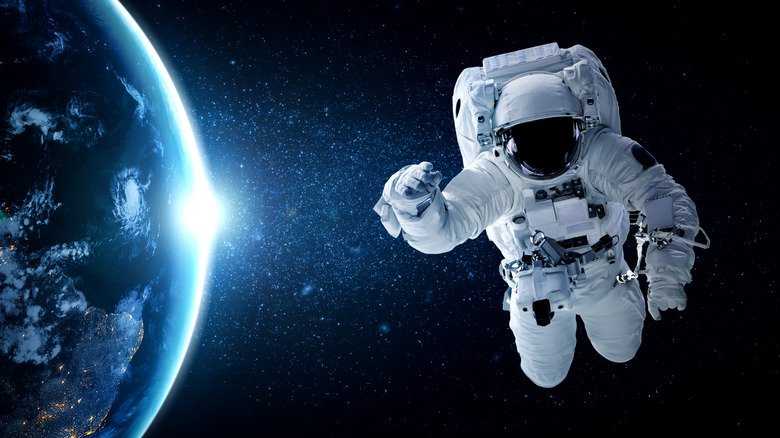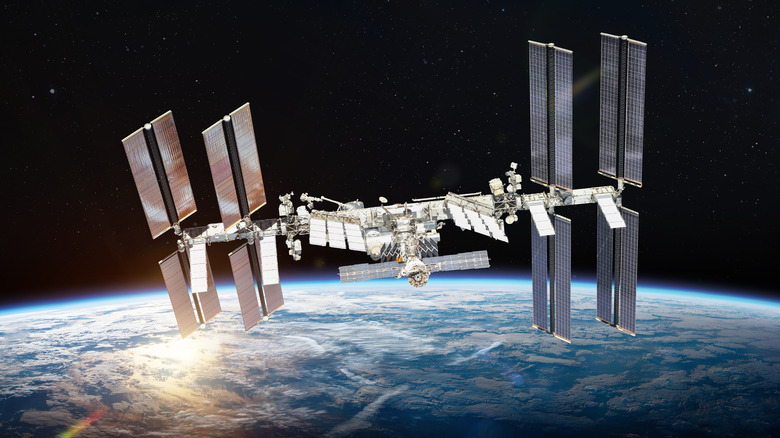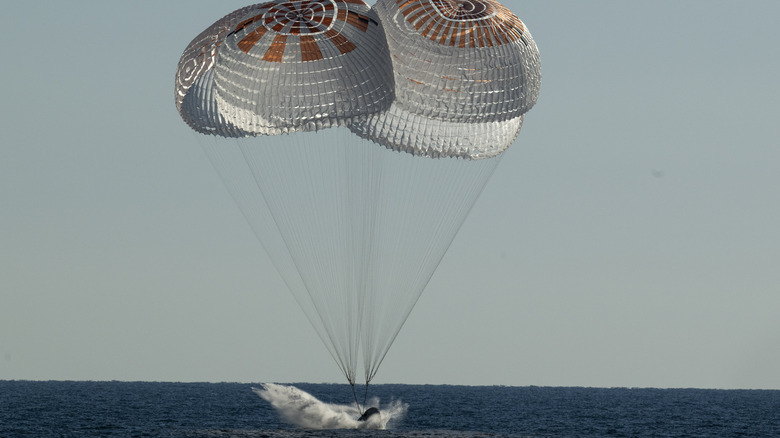Woman Pays $30K To Get Her Astronaut Boyfriend Back To Earth
For the average person, $30,000 is a lot of money. It's enough to buy a mid-range car, or act as the down payment on a house; it's even enough to live very comfortably on for a year in most parts of the world. Getting such a large amount of money together and handing it over is very difficult, but a 65-year-old Japanese woman did just that in order to "get her astronaut boyfriend back to Earth." Or at least she thought she did, according to Gizmodo.
The woman met her "astronaut boyfriend" on Instagram earlier this year, and the pair quickly formed a bond. He claimed to be a Russian cosmonaut working on the International Space Station (ISS), and several things he said seemed to back that. He posted a bunch of photos of space on the Instagram account he was using, and made regular references to major space agencies like NASA and JAXA (Japan Aerospace Exploration Agency). Apparently, the "cosmonaut" would be unable to message his Japanese crush for certain periods of time because, he claimed, the "cell service" on the space station isn't particularly good. Despite the couple only meeting online in June, and having never met face-to-face, the relationship quickly progressed and they soon had plans to get married. The only issue is, the Russian space man needed a ride home, and a ticket for a shuttle back costs $30,000. Or so he claimed (via Gizmodo).
The fee requested wouldn't scratch the surface
Getting into space and back isn't cheap, and $30,000 could look like a bit of a bargain compared to some space-related activities. Budgets for individual missions usually stretch into the billions, and most of that money doesn't come back. NASA recently crashed $330 million worth of probe into an asteroid to see if they could nudge it slightly. It wasn't a waste of money, as it could save the planet one day. The DART mission proved we can alter the course of asteroids by impacting them with relatively small objects, but it was still expensive.
The probe itself was cheaper than NASA's next generation of space suits, which cost around $500,000 a piece — with an additional $420 million having been spent on development. Those suits are going to be used on the Artemis mission, which is meant to take humanity back to the moon and provide them with a platform they can use for deeper space missions including the first manned trip to Mars. The Artemis project as a whole has a budget of $93 billion by 2025. If you want to go and live on the moon, there's suggestion that a lunar apartment with stable WiFi could cost anywhere up to $58 billion. Even a night on the International Space Station is more expensive than the $30,000 the Japanese woman handed over. Apparently, spending a night on the ISS costs around $35,000.
What is the ISS?
The ISS is a wonderful example of how countries around the globe can put their differences aside and work together to advance humanity's understanding of science. Several national and international space agencies are involved in the project, with the United States, Russia, Europe, Japan, and Canada all contributing. NASA describes the project as "the most politically complex space exploration program ever undertaken." In total, the project took 10 years to build and since its completion it has played host to over 250 astronauts. One of those astronauts even spent two years aboard the vessel.
Scientists use the station, which is in "low earth orbit," to conduct a wide range of experiments from the effect of low-gravity environments on various animals, to the challenges of growing plants in space, to things like skin aging and cancer research. While most of us will never be able to visit the ISS, you can still get a glimpse of it. Although it is orbiting 250 miles above the planet's surface and traveling at speeds of 17,500 miles per hour, you can still see it with the naked eye from ground level. The ISS is relatively easy to spot once the sun goes down, being the third most visible thing in the night sky after the Moon and Venus. You can also track the space station's location with an online tool.
The boyfriend was actually a scammer
If you haven't put the pieces together already, let us do it for you. It turns out the boyfriend was actually a scammer, and the poor lady was swindled out of her $30,000. The woman in question eventually realized this, too and contacted the police after making a total of five payments to the not actually space-based swindler. While you might be able to turn up somewhere on earth without a way to get back to the point you set off from, it's not really something you can do on the International Space Station.
As Space.com explains, there was controversy earlier this year when a comment from a Russian government official was misinterpreted, and a video circulating on social media suggested an American astronaut due to return to Earth aboard a Russian vessel had been left on the ISS. This wasn't the case, and despite strained diplomatic tensions between Russia and the U.S. — the ISS is still an area where the two nations cooperate. If you're on a government-sanctioned mission like the scammer claimed he was, the government that sent you up there will have a way to get you home. The ISS isn't a floating bus terminal, and you don't have to fork over large amounts of money for a ticket back. There is the option of traveling to the ISS privately, but the company managing the trip will expect you to pay for the return journey before you even set off for the station. It's also far more expensive than $30,000, with a seat on a shuttle there and back costing a reported $50 million.



